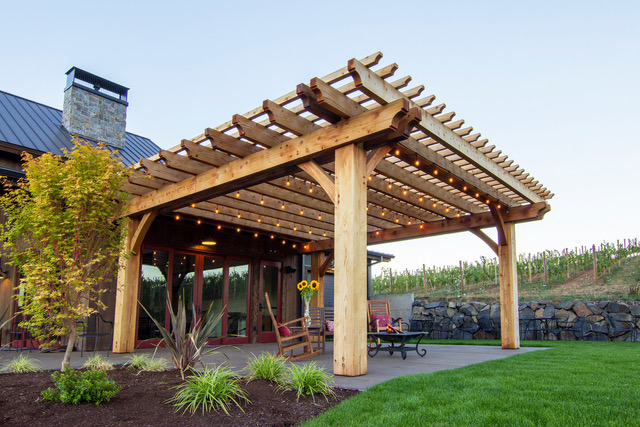The main objective when you’re trying to create an inviting oasis that incorporates sustainable landscape design is to reduce your impact on the environment. Some things to think about when creating beautiful, sustainable backyards are the amount of water needed, the health of your soil, preserving existing plants and conserving materials you’ll be using.
“Whether you are starting your landscaping from scratch or revamping an existing garden, you can make choices that are sustainable. Some strategies include using recycled materials in your landscape such as broken concrete or salvaged metal, mulching your garden beds, installing permeable paving, planting drought-tolerant trees and perennials, and using a passive solar landscape design that maximizes sun exposure in the winter and shade in the summer. Upgrading to sustainable landscaping is not only a good choice for the environment, it can also save you money on utility expenses and through sustainable landscaping rebates. The amount of maintenance required for your yard will also be reduced dramatically.” (Source: Landscaping Network)
Here are some ideas for you to think about when creating your perfect backyard:
- Choose native plants. When choosing plants and trees for your yard, look for plants that are native to your area. The University of Minnesota explains why native plants are so important:
“Native plants can be used around homes and in gardens to create sustainable landscapes. Most native plants are perennial and have extensive root systems that hold soil and slow runoff. Persistent stems, leaves, and flower parts which remain through the winter also reduce runoff, especially in the spring, as snow melts and rainfall begins before new growth is present. Particulate matter accumulates around these native plants and the plants themselves absorb chemicals such as nitrogen and phosphorous that would otherwise enter the runoff.”
Here’s more information about native plants and sustainable landscapes from the University of Minnesota at https://www.extension.umn.edu/garden/yard-garden/landscaping/native-plants-for-sustainable-landscapes/.
- Take a look at California Redwood. Redwood trees are beautiful and a great sustainable material choice for your backyard projects. Humboldt Redwood Company, a certified Forest Stewardship Council (FSC) company, explains one of the environmentally friendly benefits of Redwood:
“Unlike plastic decking products, which may produce pollution as a byproduct and often end up in landfills, Humboldt Redwood can be recycled throughout its useful life. Redwood bark, for example, is often recycled into beautiful mulch and ground cover. Old structures made of Humboldt Redwood are often salvaged and re-milled to take advantage of high value, exceptionally beautiful lumber. Even old Humboldt Redwood fence boards can find new life as a functional planter box.”
For more information about California redwood trees and the environmental benefits, visit http://www.getredwood.com/about-redwood/eco-friendly/environmental-benefit/.
- Plant groundcover instead of grass. Groundcover is plants that grown across a space of ground but it doesn’t grow tall so you don’t have to mow it. Earth Easy, a site dedicated to “Solutions for Sustainable Living”, explains why groundcover is more environmentally friendly than grass:
“Fuel for power mowers, toxic emissions, fertilizers and pesticides, water consumption and your weekend time are all part of the cost of lawn maintenance. Hiring a lawn care service will save you the time and energy, but the environmental costs remain.”
Earth Easy also explains that the groundcover spreads and chokes out weeds and is beneficial to the soil by adding nitrogen back into it and acting as mulch.
For more information about how groundcover can be attractive and beneficial in your backyard (or front yard), visit http://eartheasy.com/grow_lawn_alternatives.htm.
Think about adding some raised beds and plant produce in them or creating a butterfly garden – there are so many ways to make your backyard space more beautiful and sustainable.